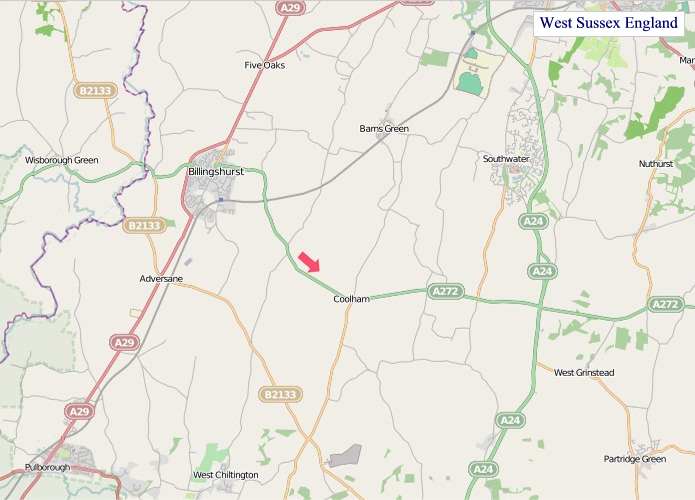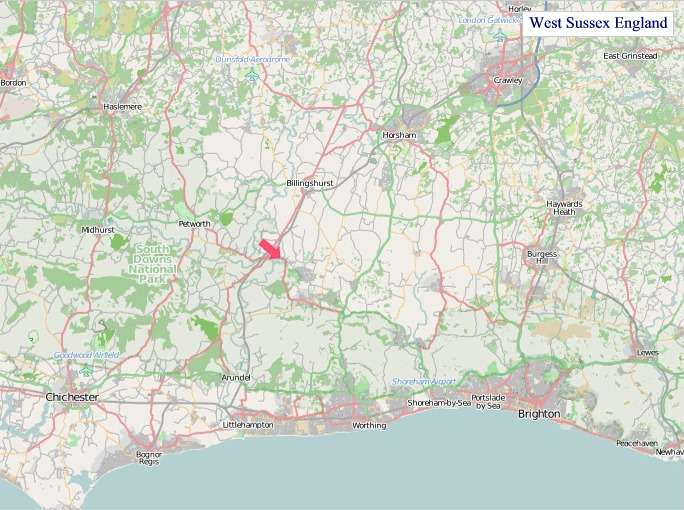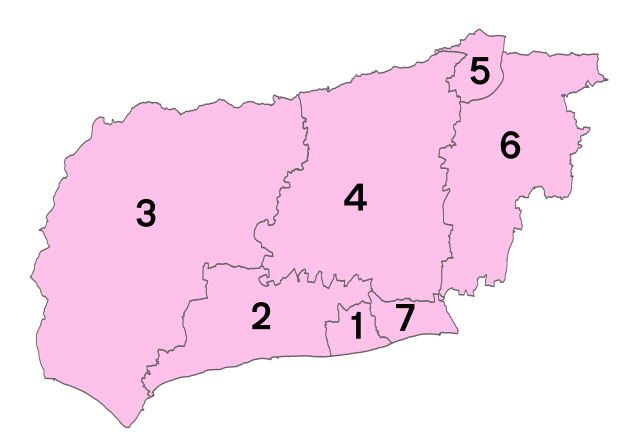Maps of West Sussex England
Home > Maps of England > West Sussex Maps
Welcome to our West Sussex map page. The map of West Sussex England that is located below is provided by Google Maps. You can "grab" the electronic map and move it around to re-center the map. You can change between standard map view and satellite map view by clicking the small square on the bottom left-hand corner of the map. Satellite map view utilises orbiting satellite and / or aerial high-resolution photography to display images of the map location to street level detail (really quite amazing). Standard map view shows a traditional street map (also known as a road map). You can use the zoom buttons on the bottom right-hand side of the map to zoom in or out to street level detail. We have digital online maps for most towns and cities on the Maps of England page. We also have a good collection of old school printable maps on the Maps of England page.
A map of West Sussex, England
West Sussex Maps
I hope you like the West Sussex County, England street map / road map situated above.
If you like our website, please consider adding a link to the site. These links help to build website traffic and they are considered a vote of confidence for a site.
West Sussex
West Sussex is a county in South East England on the English Channel coast. The ceremonial county comprises the shire districts of Adur, Arun, Chichester, Horsham, and Mid Sussex, and the boroughs of Crawley and Worthing. Covering an area of 1,991 square kilometres (769 sq mi), West Sussex borders Hampshire to the west, Surrey to the north, and East Sussex to the east. The county town and only city in West Sussex is Chichester, located in the south-west of the county. After the reorganisation of local government in 1974, the historic county of Sussex was divided into two separate counties, with the western half becoming West Sussex and the eastern half East Sussex. In the 2011 census, West Sussex recorded a population of 806,900. West Sussex is one of the Home Counties.
The county has a long history of human settlement dating back to the Lower Paleolithic era. The Romans conquered West Sussex's indigenous Celtic tribe, and incorporated the area as a Roman province. During the Early Middle Ages, the Saxons settled the area, establishing the Kingdom of Sussex in 477, which lasted until c. 827 when the kingdom was annexed by Wessex.
West Sussex has a range of scenery, including wealden, downland and coastal. The highest point of the county is Blackdown, at 280 metres (919 ft). It has a number of stately homes including Goodwood, Petworth House and Uppark, and castles such as Arundel Castle and Bramber Castle. Over half the county is protected countryside, offering walking, cycling and other recreational opportunities.
History
Although the name Sussex, derived from the Old English 'Sūþsēaxe' ('South Saxons'), dates from the Saxon period between AD 477 to 1066, the history of human habitation in Sussex goes back to the Old Stone Age. The oldest hominin remains known in Britain were found at Eartham Pit, Boxgrove. Sussex has been occupied since those times and has succumbed to various invasions and migrations throughout its long history. Prehistoric monuments include the Devil's Jumps, a group of Bronze Age burial mounds, and the Iron Age Cissbury Ring and Chanctonbury Ring hill forts on the South Downs.
The Roman period saw the building of Fishbourne Roman Palace and rural villas such as Bignor Roman Villa together with a network of roads including Stane Street, the Chichester to Silchester Way and the Sussex Greensand Way. The Romans used the Weald for iron production on an industrial scale.
The foundation of the Kingdom of Sussex is recorded by the Anglo-Saxon Chronicle for the year AD 477; it says that Ælle arrived at a place called Cymenshore in three ships with his three sons and killed or put to flight the local inhabitants. The foundation story is regarded as somewhat of a myth by most historians, although the archaeology suggests that Saxons did start to settle in the area in the late 5th century. The Kingdom of Sussex was absorbed into Wessex as an earldom and became the county of Sussex.
With its origins in the kingdom of Sussex, the later county of Sussex was traditionally divided into six units known as rapes. By the 16th century, the three western rapes were grouped together informally, having their own separate Quarter Sessions. These were administered by a separate county council from 1888, the county of Sussex being divided for administrative purposes into the administrative counties of East and West Sussex. In 1974, West Sussex was made a single ceremonial county with the coming into force of the Local Government Act 1972. At the same time a large part of the eastern rape of Lewes (the Mid Sussex district which includes the towns of Haywards Heath, Burgess Hill and East Grinstead) was transferred into West Sussex.
From Wikipedia, the free encyclopedia


"© OpenStreetMap contributors, CC BY-SA".
Districts of West Sussex

1 - Worthing
2 - Arun
3 - Chichester
4 - Horsham
5 - Crawley
6 - Mid Sussex
7 - Adur
Music


